MARPOL (The International Convention for Prevention of Marine Pollution For Ships): The Ultimate Guide
Just like SOLAS, which regulates the shipping industry to follow minimum standards to safeguard life at sea, the International Convention for the Prevention of Pollution from Ships /MARPOL is another important convention for the prevention of pollution of the marine environment.
It sets standards for stowing, handling, shipping, and transferring toxic waste. Also, it lays down rules regarding the disposal of ship-generated hazardous waste, such as cleaning agents and cargo hold washing water.
MAPOL and SOLAS are considered two adequate safety and environmental protection tools of IMO.
Read: SOLAS – The Ultimate Guide
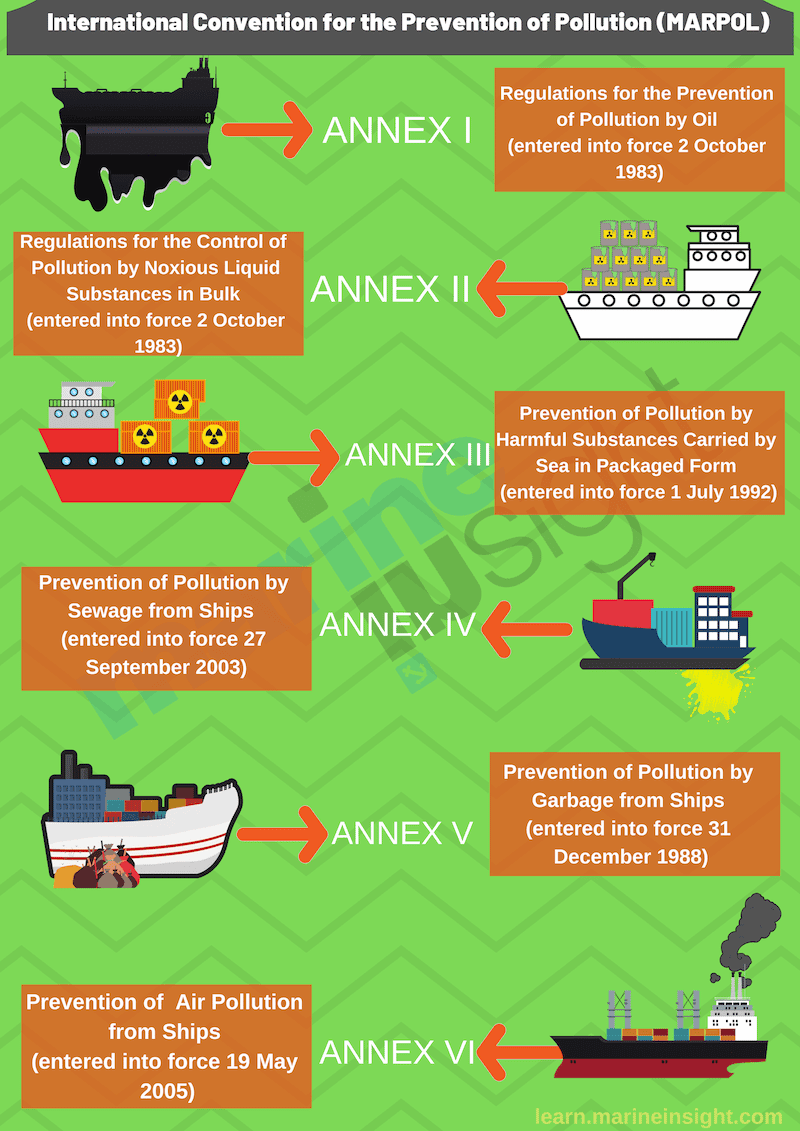
MARPOL 73/78, since it came into force in 1973 and was later revised by the protocol in 1978, ensures that shipping remains the least environmentally damaging mode of transport. It ensures that the marine environment is preserved by the elimination of pollution by all harmful substances discharged from the ship.
Related Read: 5 Instruments of International Maritime Organization (IMO) Every Seafarer Should Know
This marine environmental convention consists of six implemented annexes with their appendix for controlling and eliminating marine pollution.
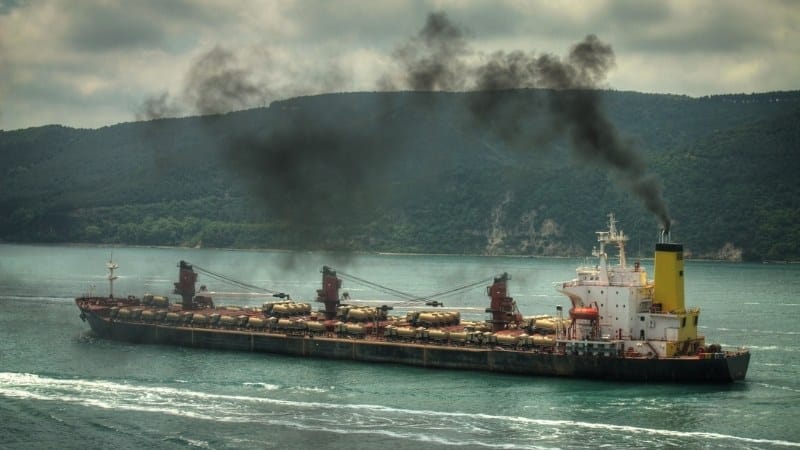
They are as follows:
Annexe I: Regulation for pollution prevention by oil (October 1983).
Annex II: Regulations for controlling pollution by Noxious Liquid Substance in bulk (April 1987).
Annexe III: Regulation for preventing pollution by harmful substances carried at sea in packaged form (July 1992).
Annexe IV: Regulation for pollution prevention by sewage from ships (Sep 2003).
Annexe V: Regulation for pollution prevention by Garbage from ships (Dec 1998).
Annex VI: Regulation for prevention of Air pollution from ships (May 2005).
They are as follows:
MARPOL Annex I
Regulation for the prevention of pollution by oil (October 1983).
This marpol protocol was adopted on 2nd October 1983 to prevent oil discharge or oily mixtures from ships intentionally or accidentally. It comprises 11 chapters which together contain 47 Regulations. It was brought about due to a spate of tanker accidents.
Chapter 1 gives a general description of MARPOL ANNEX I and consists of 5 regulations which explain the “Application” of this chapter in different types of the ship, along with the “Definition” of different terminologies used in the chapter. The regulation may not apply to all kinds of ships; hence a separate section for “Exceptions” and “Exemptions” is also provided. It also explains the condition where an administrator may allow alternative fittings, materials, appliances etc., to be installed on ships to fulfil this annexe.
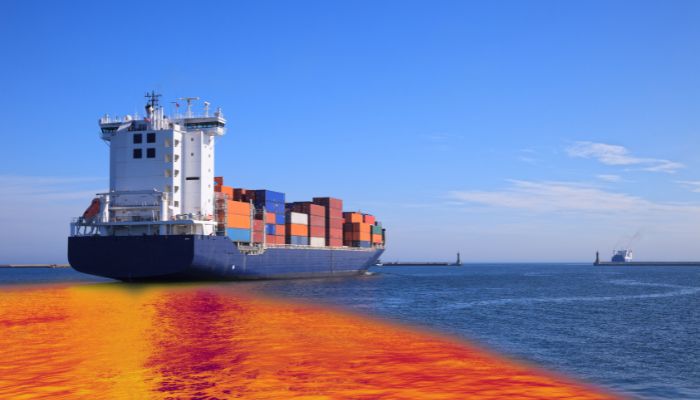
Most importantly, this annexe prohibits dumping hazardous waste within 12 nautical miles of the nearest land.
Chapter 2 deals with Surveys and Certifications requirement for all oil tanker ships of 150GT and other sips of 400 GT. And comprises five regulations.
Related Read: How to Get Dangerous Cargo Endorsement Certificate?
Regulation 6 describes the requirement for different surveys to comply with MARPOL annexe 1.
Regulation 7 provides the terms to issue or endorse the IOPP certificate to the ship post successful survey by the appropriate administration. Regulation 8 also describes how to issue or support the certificates by another contracting government, followed by Regulation 9, which tells the form of the certificate, including languages such as English or the official language of issuing country.
Regulation 10 explains the duration and validity of certificates and provides timelines for the renewal of certificates.
Regulation 11 terms the authority of port state control under Annex 1 to inspect the ship for compliance.
Chapter 3 deals with the Requirements for Machinery spaces for all ships and lists the requirements under Regulations 12 to 17 so that the engine room and other machinery spaces comply with MARPOL Annex 1.
Regulation 12 explains the requirement of storage tanks for oil residues produced on all types of ships due to machinery operation and methods to dispose of the oil residue. It further provides details to protect the fuel oil tanks for vessels having a fuel oil capacity of 600m3 and above.
Related Read: List of Important Tanks on a Ship
Regulation 13 describes the requirement for standard discharge connection on a ship to dispose of oil residue from sludge and bilge tanks.
Regulation 14 The requirements of oil filtration equipment onboard a ship for discharging engine room bilges or ballast water from fuel oil tanks are given in this regulation, followed by Regulation 15, which restricts the discharge of treated bilges in special areas.
Related Read: An Overview Of Sludge And Bilge Management Onboard Ships
Regulation 16 explains the requirement of segregating oil and water ballast carried in the ship’s fuel tank.
Related Read: A Guide To Ballast Tanks On Ships
Regulation 17 lists the need for a compliant oil record book for machinery space in oil tankers of 150GT and above and other ships of 400 GT and above.
Chapter 4. deals with the Requirements of Cargo areas in an oil tanker ship, listing down various regulations (Regulation 18 to 36).
Chapter 5 describes how to prevent pollution from an oil pollution incident. Regulation 37, which lists the SOPEP or Shipboard Oil Pollution Emergency Plan, provides the details.
Related Read: What is Ship Oil Pollution Emergency Plan (SOPEP)?
Chapter 6 lists the requirement for the reception facilities to which the ship will dispose of the oily bilge/ sludge under Regulation 38, providing details of the facility outside and inside special areas.
Chapter 7 provides the special requirement for a fixed or floating platform to comply with Annex 1 of MARPOL with Regulation 39.
Chapter 8 deals with preventing pollution, which may happen during cargo oil between tankers at sea, also known as Ship to Ship Transfer (STS). It comprises three regulations from 40 to 42.
Related Read: What is Ship-to-Ship Transfer (STS) and Requirements to Carry Out the Same?
Regulation 40 provides the scope of application for this chapter, and Regulation 41 lists down the rules on safety and environmental protection during the STS operation, followed by Regulation 42, which tells the notifications which need to be provided by the ship to port state and all the other parties involved in the operation.
Related Read: 7 Important Points For Safe Lightering Operations On Ships
Chapter 9 details the special requirement for the use of carriage of oils in the Antarctica area with Regulation 43.
Chapter 10 deals with the Verification of compliance with the provision of this convention under Regulation 44 and 45, providing details of the application and the process for verification of compliance.
Chapter 11 lists the important requirement of the international code for ships operating in Polar waters under Regulations 46 and 47. Regulation 46 lists down the definition for this annexe, followed by Regulation 47 for the application and requirement for the ships sailing in polar waters.
MARPOL Annex II
Regulations for the control of pollution by Noxious Liquid Substance in bulk (April 1987).
This Annex was adopted on the 6th of April 1987, which deals with controlling and preventing pollution due to6 Apriluid substances in bulk, intentionally or accidentally. It comprises ten chapters which together contain 22 Regulations.
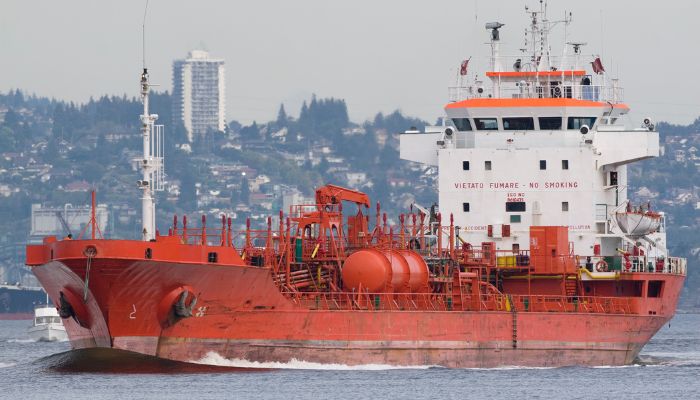
Chapter 1 gives general details on MARPOL ANNEX II and consists of 5 regulations providing the “Definition” of different terminologies which are used in the chapter and explains the “Application” of this chapter in various types of ships (Chemical tankers etc.). The regulation may not apply to all kinds of vessels; hence a separate section for “Exceptions” and “Exemptions” is also provided. It also explains the condition where an administrator may allow alternative fittings, materials, appliances etc., to be installed on ships to fulfil this annexe.
Related Read: Different Types of Tankers: Extensive Classification of Tanker Ships
Chapter 2 details different categories of Noxious liquid substances under regulation 6.
Chapter 3 lists the need for surveys and certification with four regulations from 7 to 10. Rule 7 deals with the surveys and certificates needed by chemical tankers following the provision of the International Bulk Chemical code.
Regulation 8 details the need for different surveys for the ships carrying noxious liquid substances in bulk, followed by issuing and endorsing the certificate under Regulation 9. The duration and validity of the certificate are provided in Regulation 10.
Chapter 4 specifies the Design, Construction, arrangement, and equipment for ships carrying Noxious cargo in bulk under regulation 11, followed by Regulation 12, which provides the details of pumping, piping, unloading arrangement and slop tanks.
Chapter 5 carries three regulations from 13 to 15 for the operational discharge of residues of noxious liquid substances. Regulation 13 lists the need for control of discharges of Noxious liquid substance residues.
Regulations 14 and 15 provide the details of the Procedure and arrangement manual and the Cargo record book, which needs to be filled by the ships’ officers.
Chapter 6, which consists of Regulation 16, describes the role of government and authorised parties such as port state control on measures of control to check, survey and assess the ships to carry the cargo under MARPOL Annex II.
Related Read: A List of Inspections And Surveys Deck Officers On Ships Should Be Aware Of
Chapter 7 deals with the Prevention of Pollution arising from an incident involving noxious liquid substances and consists of Regulation 17, giving the details of the Shipboard pollution emergency plan for noxious liquid substances.
Related Read: IMO: Compensation Regime For Hazardous And Noxious Cargoes A Step Closer
Chapter 8 lists the requirement for the reception facilities to which the ship can dispose of the residues and mixture generated from noxious liquid substances under Regulation 38, providing details of the facility and terminal unloading arrangements.
Chapter 9 deals with the Verification of compliance with the provision of this convention under Regulations 19 and 20, providing details of the application and the process for compliance verification.
Chapter 10 lists the important requirement of the international code for ships operating in Polar waters under Regulations 21 and 22. Regulation 21 lists down the definition for this annexe, followed by Regulation 22 for the application and requirement for the ships sailing in polar waters.
Related Read: How The IMO Polar Code Supports Safe And Eco-Friendly Shipping
MARPOL Annex III
Regulation for preventing pollution by harmful substances carried at sea in packaged form (July 1992).
This Annex deals with those substances which are hazardous and carried in packaged cargo. The identification of such material is provided in the IMDG Code. The MARPOL Annex III came into force on 1 July 1992 and comprised 2 Chapters containing 11 regulations.
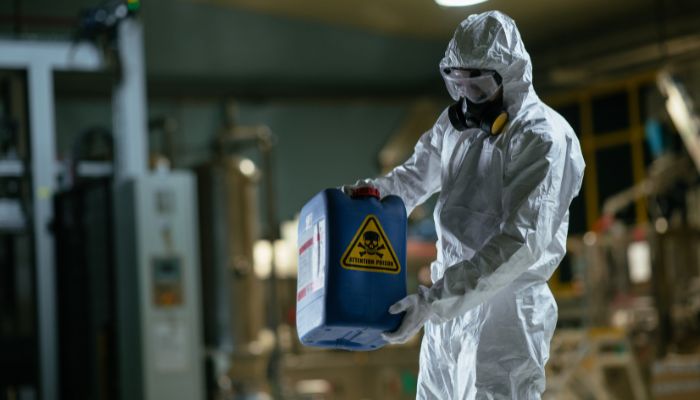
Related Read: What is the International Maritim1 Julyerous Goods Code (IMDG)?
Chapter 1 gives general details on MARPOL ANNEX III, consisting of 9 regulations.
Regulations 1 & 2 explain the “Definition” of different terminologies used in the chapter and the “Application” of this chapter in various types of ships carrying Hazardous goods.
Regulations 3 & 4 list the requirement for packaging and Marking/labelling of the packages carrying IMDG cargoes.
Regulation 5 provides the details of the documentation which are needed by the ship which is carrying hazardous material under MARPOL Annex 3
Related Read: A Guide To HAZMAT Cargo Loading On Ships
The storage requirement and quantity limitations for carrying harmful substances in bulk are provided under Regulations 6 & 7.
Regulation 8 lists the exceptions a ship carrying harmful cargo in bulk can have under various circumstances.
The authorisation of port-state control on the operational requirement of ships carrying such substance under MARPOL Annex III is listed in Regulation 9.
Chapter 2 deals with the Verification of compliance with the provision of this convention providing details of the application and the process for compliance verification under Regulations 10 and 11.
MARPOL Annex IV
Regulation for the prevention of pollution by sewage from ships (Sep 2003).
Entered into force on 27 September 2003, this Annex focuses on preventing sewage pollution from ships. It has 7 Chapters comprising 18 Regulations. It underlines restrictions for the discharge of sewage from ships.
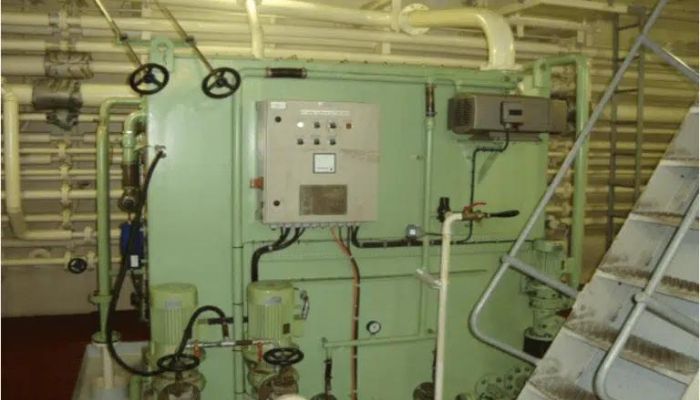
Chapter 1 gives a general description of MARPOL ANNEX IV and consists of 3 regulations which explain the “Definition” of different terminologies used in the chapter and the “Application” of this chapter in various types of ships. The regulation may not apply to all kinds of ships; hence a separate section of “Exceptions” is also provided.
Related Read: MARPOL ANNEX 4 Explained: How to Prevent Pollution from Sewage at Sea
Chapter 2 lists the need for surveys and certification with five regulations from regulations 4 to 8. Rule 4 deals with the surveys to be done on ships implicated by this Annex. Regulations 4 & 5 provide the details for the issue or endorsement of certificates by the administration and another government. Regulation 7 & 8 gives details of the form, duration, and validity of the sewage pollution prevention certificate.
Chapter 3 provides the need of having Equipment and control of sewage discharge from the ship. Regulation 9 under this chapter provides details of sewage system requirements on ships, followed by Regulations 10 and 11 for having a standard sewage discharge connection to transfer sewage to port facilities and discharge sewage at sea within and outside particular areas.
Related Read: Sewage Treatment Plant on Ships Explained
Chapter 4 consists of 2 regulations (12 & 13) with the details of the reception facilities requirement. Regulation 12 provides the government agencies with the compliance to have a reception facility—code 13 lists the requirement of reception facilities for Passenger ships in special areas.
Related Read: Cruise Ship Sewage Discharges Into The Baltic Sea To Be Banned
Chapter 5, which consists of Regulation 14, describes the role of government and authorised parties such as port state control on measures of control to check, survey and assess the ships under MARPOL Annex IV.
Chapter 6 deals with the Verification of compliance with the provision of this convention providing details of the application and the process for compliance verification under Regulations 15 and 16.
Chapter 7 list the important requirement of the international code for ships operating in Polar waters under Regulation 17 and 18. Regulation 17 lists down the definition for this annexe, followed by Regulation 18 for the application and requirement for the ships sailing in polar waters.
MARPOL Annex V
Regulation for preventing pollution by Garbage from ships (Dec 1998).
This annexe deals with the garbage produced onboard ships, including e-waste and cargo residues and ways to prevent pollution from the same. It was enforced on 31 December 1988, having 3 Chapters with 14 Regulations.
Chapter 1 gives general31 December MARPOL ANNEX II and consists of 10 regulations providing the “Definition” of different terminologies used in the chapter under Regulation 1 and explains the “Application” of this chapter in various types of ship Regulation 2.
Related Read: ICS Publishes New Edition Of Industry Guidance On Garbage Management Plans
Regulation 3 lists the general prohibition on garbage discharge at sea, followed by Regulation 4 for the discharge of waste outside special areas.
Regulation 5 specifies the special requirements for garbage discharge from fixed and floating platforms. The need to discharge waste in the special area is given under Regulation 6.
Regulation 7 & 8 describes the reception facilities’ exceptions and requirements, including those inside the special areas.
Regulation 9 consists role of port-state control on measures of control to check, survey and assess the ships under MARPOL Annex V.
Regulation 10 deals with the need for Garbage Management Plan (GMP), including record books and placards.
Related Read: What is Garbage Management Plan (GMP) on a Ship?
Chapter 2 deals with the Verification of compliance with the provision of this convention under Regulations 11 and 12
Chapter 3 list the important requirement of the international code for ships operating in Polar waters under Regulation 13 and 14. Regulation 13 lists down the definition for this annexe, followed by Regulation 14 for the application and requirement for the ships sailing in polar waters.
MARPOL Annex VI
Regulation for prevention of Air pollution from ships (May 2005).
This relatively new annexe deals explicitly with ways to prevent pollution from ships, both by accidental causes and the one resulting from routine operations and operational wastes. It came into force on 19th May 2005, having five chapters with 25 Regulations.
It has put limits on nitrogen and sulphur e19 May and particulate matter from marine diesel engines with a power of over 130kw.
Chapter 1 gives a general description of MARPOL ANNEX VI and consists of 4 regulations which explain the “Application” of this chapter in different types of the ship, along with the “Definition” of different terminologies used in the chapter. The regulation may not apply to all kinds of ships; hence a separate section for “Exceptions” and “Exemptions” is also provided. It also explains the condition where an administrator may allow alternative fittings, materials, appliances etc., to be installed on ships to fulfil this annexe.
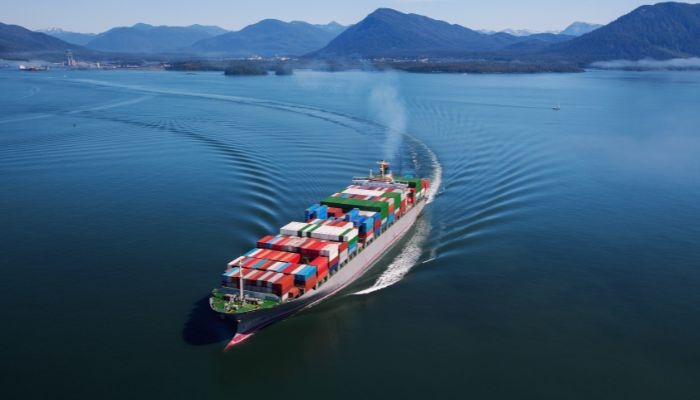
Chapter 2 lists the survey, certification, and means of control dealing with air pollution from the ship. It has 7 Regulations, with Regulation 5 explaining the need for different surveys for the vessel to prevent air pollution, followed by issuing and endorsing International Air Pollution Prevention (IOPP) certificate and International Energy Efficiency Certificates (IEEC) in Regulation 6.
Regulation 7 provides the details for the issue or endorsement of certificates by another party, followed by the forms of certificates and statement of compliance related to fuel oil consumption reporting in Regulations 8 for both IOPP and IEEC. The details for the validity of these certificates are provided in Regulation 9.
Related Read: Important MARPOL Amendments Enter Into Force
Regulation 10 terms the authority of port state control under Annex VI to inspect the ship for compliance.
Regulation 11 explains how the administration and authorised party can detect ships for the violation and how to enforce this annexe.
Chapter 3 deals with the requirements for control of emissions from ships and consists of 7 Regulations, starting with the details of ozone-depleting substances in Regulation12, such as the refrigerant used on ships.
Related Read: What is Ozone Depleting Substances on Ships?
Regulation 13 briefly describes Nitrogen Oxides (NOx) with different Tiers (Tier I, II and III) in and outside the emission control areas.
Related Read: What is Nitrogen Oxides or NOx air pollution from Ships?
Regulation 14 gives a brief about Sulphur Oxides (SOx) with the requirement for the quantity of sulphur in the fuel oil as per the year, in and outside emission-controlled areas.
Related Read: What is Sulphur Oxides or SOx air pollution from Ships?
The emissions of Volatile Organic compounds from the oil tankers are considered in Regulation 15, providing the details to comply with the requirements.
Regulation 16 talks about the shipboard incineration operations and when the incineration is allowed.
Related Read: Construction and Working of Waste Oil Incinerator
Regulation 17 describes the reception facilities’ requirements for disposing of ozone-depleting substances, residue from exhaust cleaning etc.
To comply with the exhaust emission requirements, proper fuel oil is made available to burn on ships, whose condition is described in Regulation 18.
Chapter 4 provides the Regulation on Energy Efficiency on Ships having Regulations 19 to 23. Regulation 19 talks about the application of this chapter on ships of 400GT and above.
Related Read: How to Improve Energy Efficiency of Ships?
Regulations 20 and 21 provide the details of Attained Energy Efficiency Design Index (Attained EEDI) and Required EEDI.
Related Read: Energy Efficiency Management in the Maritime Industry
The Ship Energy Efficiency Management Plan (SEEMP) requirements, which should be kept onboard, are provided in Regulation 22. Further, the requirement for fuel oil consumption data collection and reporting to the administration is also listed in this regulation.
Related Read: What is Ship Energy Efficiency Management Plan?
Regulation 23 talks about the technical cooperation between different parties (Administration, Government agency, Shipping company etc.) to improve the energy efficiency of ships.
Chapter 5 deals with the Verification of compliance with the provision of this convention under Regulations 24 and 25.
Thus, SOLAS and MARPOL conventions stand as two solid pillars that support the maritime industry by protecting the most important issues – marine pollution prevention and the safety of human life.
Disclaimer: The author’s views expressed in this article do not necessarily reflect the views of Marine Insight. Data and charts, if used in the article, have been sourced from available information and have not been authenticated by any statutory authority. The author and Marine Insight do not claim it to be accurate nor accept any responsibility for the same. The views constitute only the opinions and do not constitute any guidelines or recommendations on any course of action to be followed by the reader.
The article or images cannot be reproduced, copied, shared or used in any form without the permission of the author and Marine Insight.

About Author
Raunek Kantharia is a marine engineer turned maritime writer and entrepreneur. After a brief stint at the sea, he founded Marine Insight in 2010. Apart from managing Marine Insight, he also writes for a number of maritime magazines and websites.
Do you have info to share with us ? Suggest a correction
Latest Maritime law Articles You Would Like:
Latest News
- What is the Purpose of DG Shipping?
- What are Logistics Risks?
- How Port and Terminal Operators Can Control Emissions?
- Minimum Quantity Commitment (MQC) and Liquidated Damages in Container Shipping: Concept and Relevance
- MARPOL (The International Convention for Prevention of Marine Pollution For Ships): The Ultimate Guide
- The Ultimate Shipping Container Dimensions Guide
Subscribe To Our Newsletters
By subscribing, you agree to our Privacy Policy and may receive occasional deal communications; you can unsubscribe anytime.








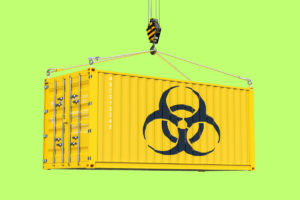






Plastic owerboard,
wonderful work you are doing
we all should work together to protect our environment
United States Ballast Water Regulations
To satisfy ballast water legislation signed into law, The “ final rule”/ regulations and/or lack of regulation appears according to this link, scheduled for February 2023 four years after the release of purposed regulation in 2020 to satisfy the legislation signed into law in 2018
https://www.reginfo.gov/public/do/eAgendaViewRule?pubId=202204&RIN=2040-AF92
Will it matter what happens in the election for 2024? Sadly the history for addressing ballast water, is a history that follows elections producing few results. Back in 2008 when all the senators were running for President, H.R.2830 was left to die in the senate and the new administration opted for more study, over 4years later and after 2012 reelection we got a weak vessel incidental discharge act called VIDA. Hopefully the EPA will not continue to purpose weakening the existing VIDA, by removal of BMP’s (such as trying to avoid the uptakes of sewage and pathogens etc., which they purposed in 2020) and will additionally add something meaningful for the Great Lakes after purposing nothing. This is legislation that uses Federalism and neglects considering the effects of global warming. It dose not consider, (by design) that all United States citizens who depend on clean water for their life, health, and livelihood should be included as stakeholders. The general public is being left clueless by the media and politicians about the dangers and the permanent destruction to our countries water being exasperated by climate change ballast water presents. The emphasis the EPA places on cost is contrary to President Obama’s amending the invasive species act to reflect the need to consider human health when global warming is a factor.
Sincerely,
Don Mitchel
Thank you for your comment